Honda Forza 350 (2021)
Imagine if someone made a vehicle that could nip through city traffic like it wasn’t there. Imagine that the same vehicle had enough weather protection to keep the worst of the wind and rain off could travel 90 miles on a gallon of fuel and its emissions were clean enough to pass the very latest regulations.
Oh, and just for fun, how about we make it able cruise at motorway speeds, keep up with the traffic in any lane, and filter through the narrowest of gaps when everything grinds to a halt?
What if this vehicle cost about the same as your daily cup of coffee and saved you £1000s every year on expensive season tickets, station parking while removing the leaves-on-the-line-misery and worrying about the next gruesome virus?
That vehicle exists. It’s called a mid-sized maxi-scooter and Honda’s Forza 350 is the newest and probably the best of the bunch. For 2021, the Forza gets a bigger engine, more power, cleaner emissions a taller screen (still electrically adjustable), new LED headlights and Honda’s voice-activated smartphone control.
Honda Forza 350 Power, torque and performance
No one buys a scooter because of how much power it makes. What’s important to urban and not-only urban commuters is an engine that’s quick off the mark to get you ahead at traffic lights. It’s good if it also has some midrange power for overtaking trucks and buses and the ability to do 60-70mph without wringing its neck on dual carriageways is handy so you can keep a safe distance between you and the traffic behind.
Most 125cc scooters do the first one well enough with just 10-12bhp and lots of revs. The second challenge needs some midrange torque and that usually comes from a bigger engine, while the third one – maintaining a reasonable top speed – needs torque and revs, which in turn gives power.
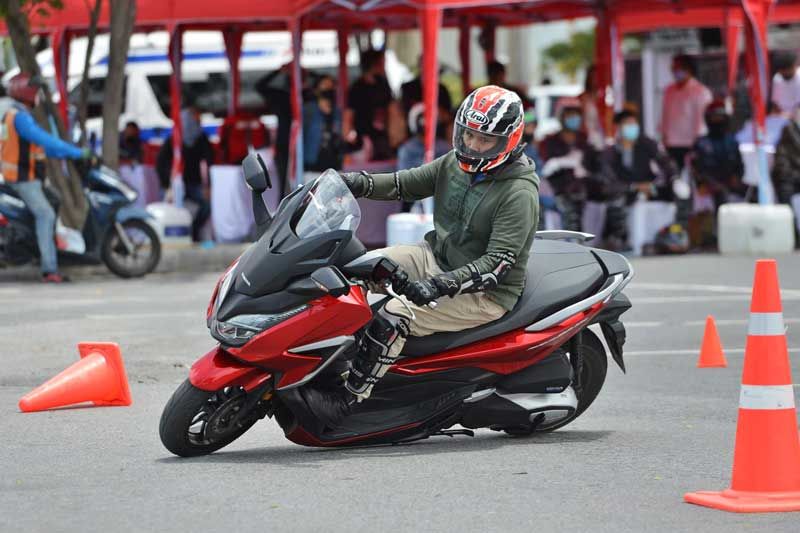
The Forza 350 has 29bhp and 32 lb-ft of torque, which is four bhp more than both the old Forza 300 and Yamaha’s XMax 300 and a few lb-ft of additional torque too. It accelerates quick enough off the line to see off almost any four wheeler and in an unofficial test on what might have been a private road (in as much as many small portions of it were paid for by the taxes of private individuals) it might have taken just 610 metres to go from zero to an indicated top speed of 100mph (which is where the speedo runs out) if you were the sort of shallow individual for whom that sort of thing might have been important.
What is important is the extra flexibility that top speed gives you while riding on a motorway. There’s plenty of acceleration between 70-85mph to run with the other traffic and, if you need to nip out from lane two to lane three in a hurry, it just takes a twist of the wrist.
It’s not as fast as a powerful motorbike - think of it like a powerful family car… with a ‘Sport badge on the boot. Except this one is also small enough to fit through all the gaps when the traffic comes to a halt in rush hour.
Honda Forza 350 Engine, gearbox and exhaust
For those who are interested, the Forza 350 has a liquid-cooled, single cylinder, single overhead cam with fuel-injection, digital ignition and enough emissions equipment to meet the latest Euro 5 regulations. Linked to a CVT twist-and-go transmission. The new engine is actually 330cc, up 51cc from the Forza 300, which was actually 279cc.
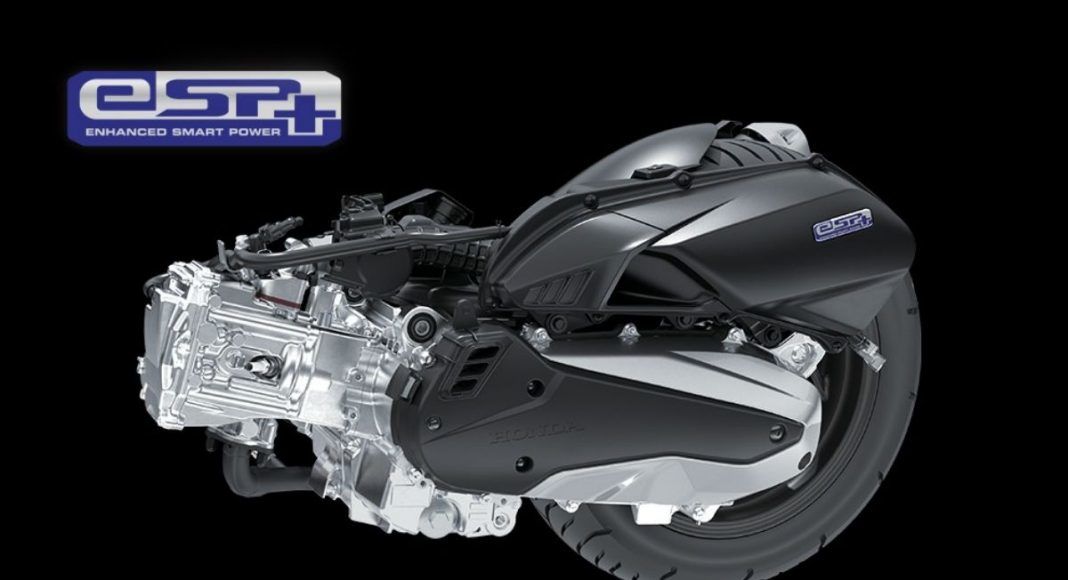
Scooter engines tend to be in a relatively low state of tune because they need flexibility rather than outright pace. The Forza’s power peaks at 7500rpm, although the redline is at 9000rpm. Peak torque (which is where, on a manual gearbox, you would ‘feel’ was the right time to change up a gear) is 5250rpm.
Honda Forza 350 Economy and running costs
Average consumption so far in the first 400 miles has been around 82mpg. I’d expect that to get a little better by 1000 miles or so as the engine is run-in properly. In the name of road testing, I tried as hard as I could to get the most possible mpg in practical, usable riding conditions (there’s no point getting 120mpg if you have to do 40mph on a motorway to achieve it) and also the least mpg possible.
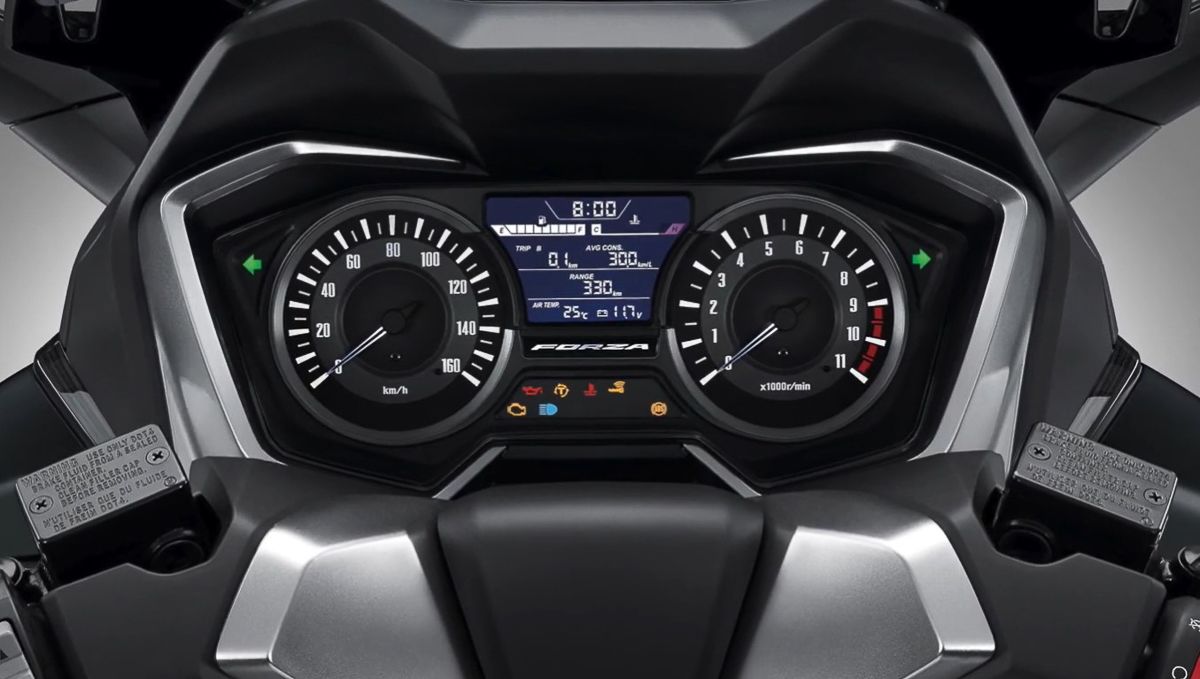
A long motorway trip, sticking as closely to 70mph as I could, having no worries about being too slow, saw a hugely impressive 88.9mpg. Dropping the speed down to 60mph added another 4mpg but didn’t feel quite as comfortable in among all the HGVs on a scooter.
At the other end of the scale, I got up early and went for a thrash on some back roads, like I would on a sports bike. The Forza was surprisingly capable and more fun than expected. Continuous opening and closing of the throttle in and out of corners. Flat out acceleration and general looning about still returned 66mpg, which is about double what I get on my own 918cc sports bike on the same roads.
The first service (basically an oil and filter change and check over) is at 600 miles and regular services follow at 8k, 16k, 24k etc. Scooter engines often carry much less oil than bike engines and that can mean the oil works harder and needs replacing more often, so 8000 service mile intervals suggest Honda has found a way of keeping the oil sweet.
Other running costs will be in line with other scooters. Tyres will need replacing more often than a 125cc scooter because they work harder on the 350. Brakes too because there’s a little more weight to stop. Insurance won’t be as expensive as you’d think compared to a smaller scooter because the riders aren’t on L-plates and are seen to be less of a risk.
And all the running costs pale into insignificance when comparing the Forza to commuting by train. In the three years your finance will run you’ll probably pay less to buy and run the Forza than the car parking at the station alone would have cost you before, never mind the actual season ticket.
Honda Forza 350 seat height, weight and manoeuvrability
184kg is relatively light for a motorcycle, but heavy compared to a smaller scooter.
Honda’s own PCX125 weighs 58kg (a ten-stone human) less at 126kg and even the Forza 125 comes in at 20kg less, which shows how much extra scooter you get for your money with the Forza.
The seat height of 780mm doesn’t seem too high, but the seat is very well padded and wide, so the arch of the foot-to-foot measurement is greater than you’d think. At six-foot and 32in inside leg I can just get both feet flat on the floor. A mate of mine who is six inches shorter was on tiptoes. That’s not as big a problem as you might think – many shorter-legged riders are fine on tall bikes – it’s just about being confident and working out the ‘knack’.
But until you get it, you’ll feel a bit nervous and it’s well worth the effort to practice lots in your local car park because rescuing 184kg of stricken scooter is like trying to lift two 14-stone humans…at the same time.
If you’re new to scooters, you’ll notice the weight as you push it around with the engine off. Low-speed manoeuvring like U-turns feels a bit clumsy because the handlebars are narrow, your feet are forward, and the Forza has a longer wheelbase than some touring bikes. Thankfully, you soon get the hang of it.

Once moving the Forza is as nimble and easy to slip through traffic as you’d want it to be. The narrow bodywork, compact dimensions and stubby handlebars let it slip through just about any gap. The mirrors are widest part of it and even they can be pulled in easily when filtering (you don’t need to know what’s behind you when nothing else is moving) to get them out of the way of car wing mirrors. Smart design means they pop back into the correct position when you’re free from the traffic jams.
I always find that using a small amount of back brake when riding at very low speeds helps keep the bike feeling sharp and stable. Scooters are great for this because, being on the left handlebar, the rear brake is even easier to control.
Honda Forza 350 Handling, suspension and chassis
Scooter handling is a very different requirement to motorcycle handling. Scooters usually have short wheelbases and smaller wheels than a motorcycle and their suspension is set-up for soaking up urban potholes rather than high-speed control through a corner.
So, they drop into a turn very quickly, but often feel a bit nervous and wobbly once leant over. Which is fine for flicking through roundabouts or changing direction in traffic quickly, but not so good for enjoying a life-of-lean at 45 degrees.
That’s fine by me and I was surprised how well the Forza coped with some bumpy B-roads when I took it on my ‘let’s see how bad we can get the fuel consumption to be’ test. Long, sweeping bends at 70mph were surprisingly confident given that the suspension is set very soft and isn’t the most sophisticated set-up.
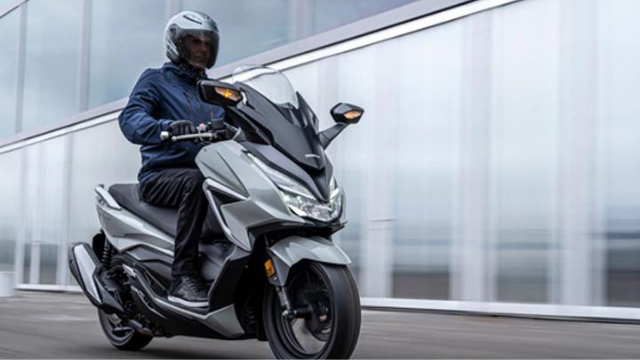
Much of this is down to the tyres. Honda has smartly chosen to fit some seriously good Pirelli Diablo rubber to the Forza. It grips well. But also has a stable profile and construction that can handle this much weight at these kinds of speed.
The only time it felt lacking was 20 miles from home after two hours fast motorway riding. There’s a part of the A23 where the trucks have worn grooves into the tarmac and there’s bumps and potholes too. On this section the Forza felt like it had a flat tyre and a loose wheel both at the same time. Adding more preload to the rear shock absorbers would have fixed it but that would also raise the seat a little higher too.
Honda Forza 350 Brakes
Single front and rear discs with ABS bring the Forza to a stop pretty-darn quickly when you need them to. Thankfully, there’s a lot of feel at the levers too – a gentle stroke knocks off a few subtle mph when filtering through traffic. If you want to introduce your eyeballs to your visor it needs a strong pull, but the stopping force seems proportionate.
What also helps keep this calm is the Forza’s low stance, relatively long wheelbase and a suspension set-up that doesn’t dive too much when you brake hard.
On a motorcycle, in the dry I usually split my braking 75:25 front: rear. On a scooter though I find 60:40 works better because too much front can overwhelm scooter front suspension, tiny wheels and the not-always-grippy front tyres some manufacturers fit.
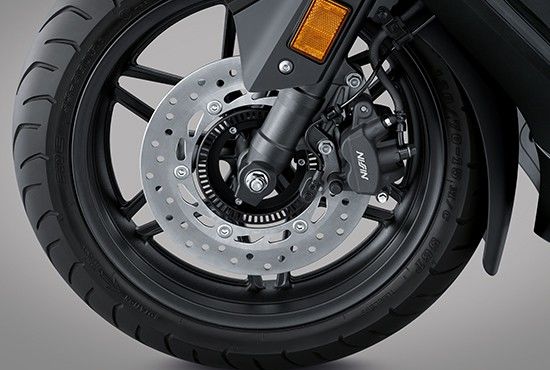
The Forza has very grippy Pirelli tyres, high quality front suspension and would allow more braking force on the front if you needed it.
The ABS is a nice-to-have, especially on wet urban manhole covers, and the Honda system is non-intrusive – it only chips in when you really need the help.
Honda Forza 350 Comfort over distance and storage capacity
One of the main reasons to buy a maxi-scooter is the ability to do longer journeys with more comfort. On a smaller scooter you can do 60-70mph but the engine will be right at the top of its usable rev range, which feels cruel for long distances. You could of course, slow down, or you could buy a bigger scooter, like this one.
At 70mph it’s doing a fraction over 6000rpm and the engine’s redline is set at 9000rpm, so motorway cruising needs just two thirds of the available revs.
That’s only one part of the long-distance story though, because there’s no point having an engine that can do the miles if the riding position isn’t comfortable for anything other than commuting.
Thankfully, the Forza is very comfortable. I did a couple of long trips in the saddle for more than two and a half hours at a time. The riding position works really well. Back and arms stay relaxed, and the electrically adjustable screen gives a choice between quiet calm without windblast or fresh air and some pressure on your shoulders and neck to take the pressure off your arms. Being able to move your feet from central to forward helps as well.
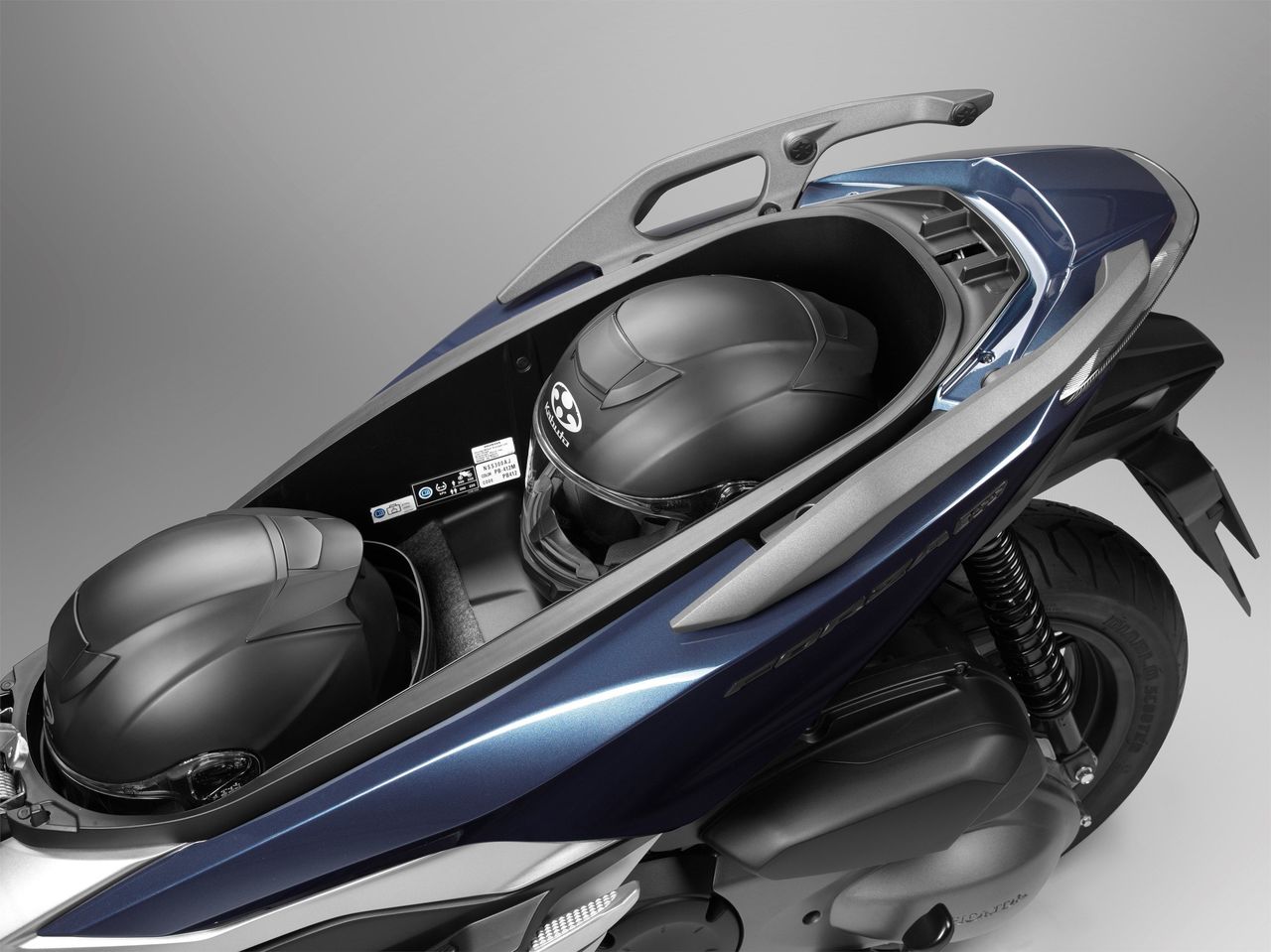
There’s a lot of storage space under the seat. Enough for two full face helmets, depending on their design. A smooth-design, sporty helmet, like my Shoei NXR fits in either the front or rear of the under-seat area, but a bigger design like my Shoei GT-Air2 with built-in sun visor only fits in the rear part of the storage.
When solo I can get my helmet, gloves and full textile two-piece riding suit under there meaning I can ride into town, get all my kit under the seat and not have to walk round like a spaceman all afternoon. If I bought a Forza I’d also buy the 45-litre top box for additional luggage capacity though, which would give enormous carrying capacity without adding to width and reducing the ability to filter through traffic.
Rider aids and extra equipment / accessories
ABS on the brakes is an obviously useful rider aid for all-weather commuting (and a legal requirement). Traction control on a 29bhp scooter might seem less obvious, but there are lots of ways to lose traction on diesel-strewn, manhole-covered city streets and this is a bike that can accelerate quickly enough to need it.
Honda’s smart keyless ignition system works well. The fob stays in your pocket and the bike recognises when it is in range and allows you to switch on the ignition and start the engine. Fuel filler and opening the seat are also controlled by the smart key system. There’s also a ‘find my bike’ function, which is probably more useful in Milan where your Forza will be one of hundreds parked at the Piazza. Press the button on the fob and your bike’s indicators flash allowing you to find it.
Honda Forza 350 connectivity
The voice controlled smart phone system allows you to pair your (Android-only at the moment) smartphone to the Forza and a Bluetooth headset. Having done that (and downloaded the Roadsync app) you can then control your phone (calls, messaging, music and navigation) using voice activation or via the controls on the handlebars. For now, it remains untested because no one in my immediate riding circle has an Android phone. That doesn’t bother me too much - I’m one of those people who prefer not to be disturbed on a bike. No phones, no music and sat-nav only for the last couple of miles. I am however a road tester and it’s my job to provide a complete review, so will find someone who can lend me a suitable device to test it in due course. Watch this space for the update.
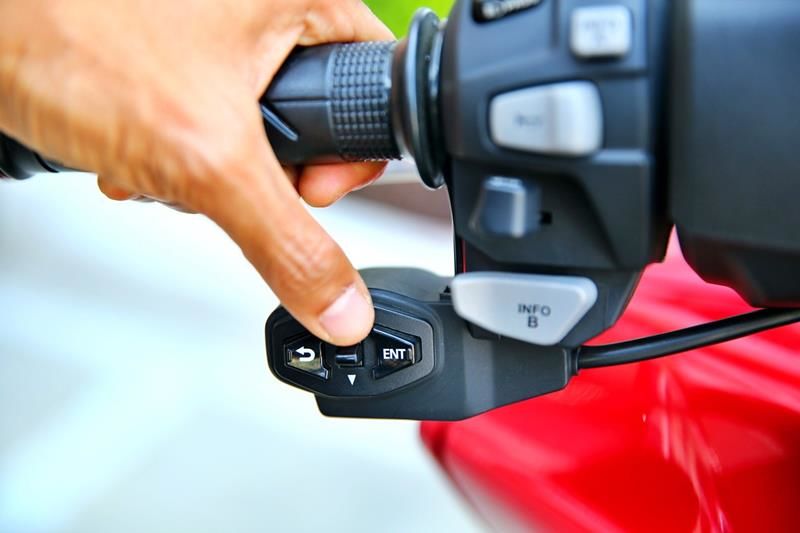
Honda Forza 350 verdict
If you sat down with a blank sheet of paper to design the perfect utility vehicle to get one person from one place to another as quickly, effectively and cheaply as possible, you’d do well to come up with anything better than Honda’s Forza 350. Fast enough to keep up with and ahead of any four wheeled traffic (and many two wheelers over distance). Comfy enough to do long journeys, practical, with a decent screen and weather protection, plus a lot of under seat storage space.
There are cheaper mid-sized scooters – Honda’s own SH350 for one, but that bike has less storage space, a smaller fuel tank (meaning more frequent fill-ups) and no screen.
For riders who already have a full motorcycle licence, it should be a no-brainer to buy a Forza to sit alongside your other bike in the shed for commuting, especially because the PCP finance is very affordable. For non-riders, there’s the twin hurdles of cost and time to gain a full motorcycle licence. It’s a faff but will change your life and you’ll wonder why you didn’t do it sooner.
Honda Forza 350 spec
Capacity : 330cc
Bore x Stroke : 77x70.8mm
Engine layout : Single cylinder
Engine details : Liquid-cooled, 4v SOHC
Power : 29bhp (21.5kW) @ 7,500rpm
Torque : 24lb-ft (31.5Nm) @ 5,250rpm
Top speed : 90 mph (estimated)
Transmission : CVT belt drive
Average fuel consumption : 82mpg tested
Tank size : 11.7 litres
Max range to empty (theoretical) : 220 miles
Reserve capacity : No reserve, but warning flashes at 45 miles
Rider aids : ABS, TC, keyless ignition, smartphone control
Frame : Steel underbone
Front suspension : Telescopic forks
Front suspension adjustment : None
Rear suspension : Twin shocks
Rear suspension adjustment : preload
Front brake : 256mm disc, two-piston caliper
Rear brake : 240mm disc, two-piston caliper
Front tire : 120/70R15
Rear tire : 140/70R14
Rake/Trail : 26.5°/89mm
Dimensions : 2147mm x 754mm x 1507mm (LxWxH)
Wheelbase : 1510mm
Maximum loading : 180kg
Seat height : 780mm
Kerb weight : 184kg
















